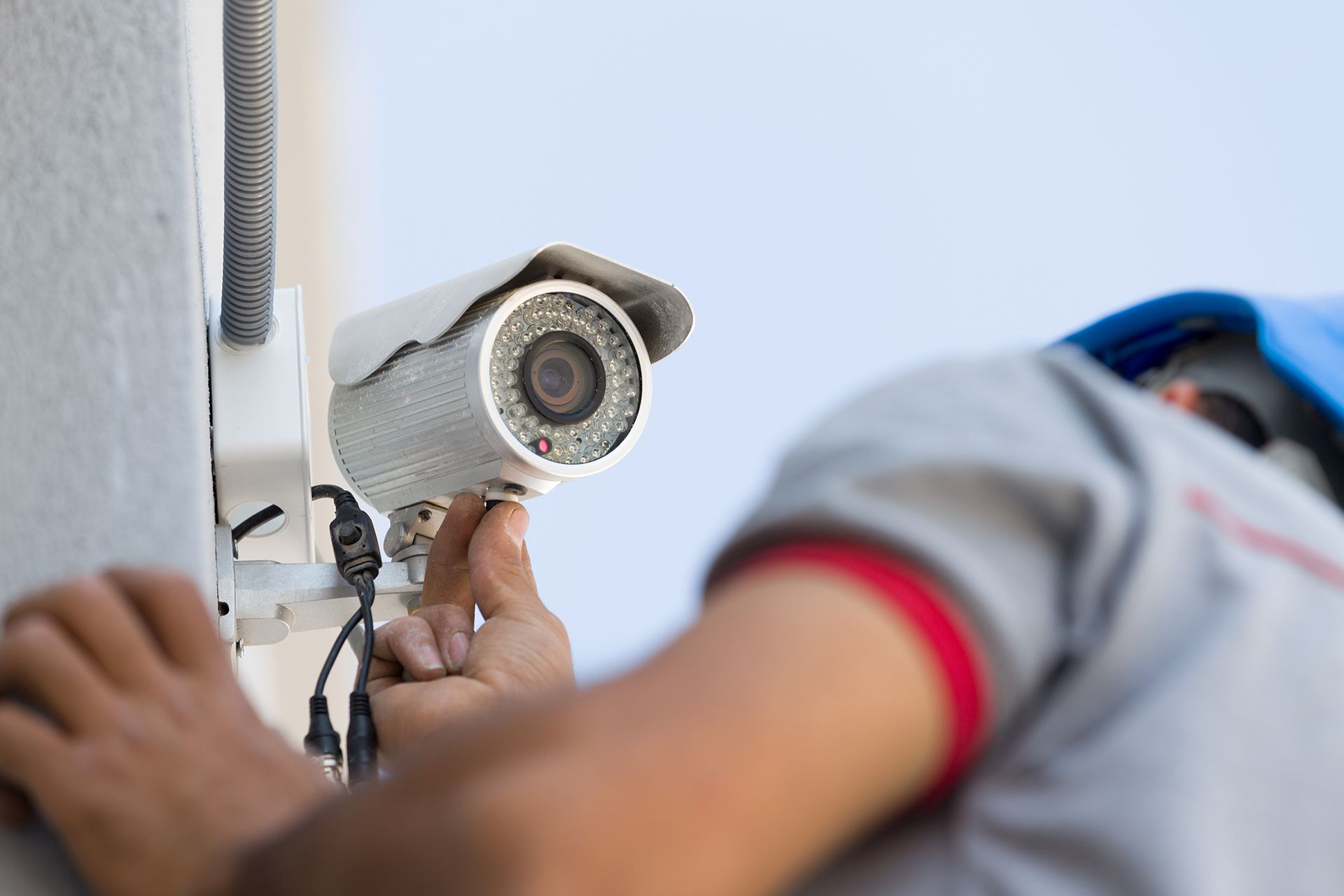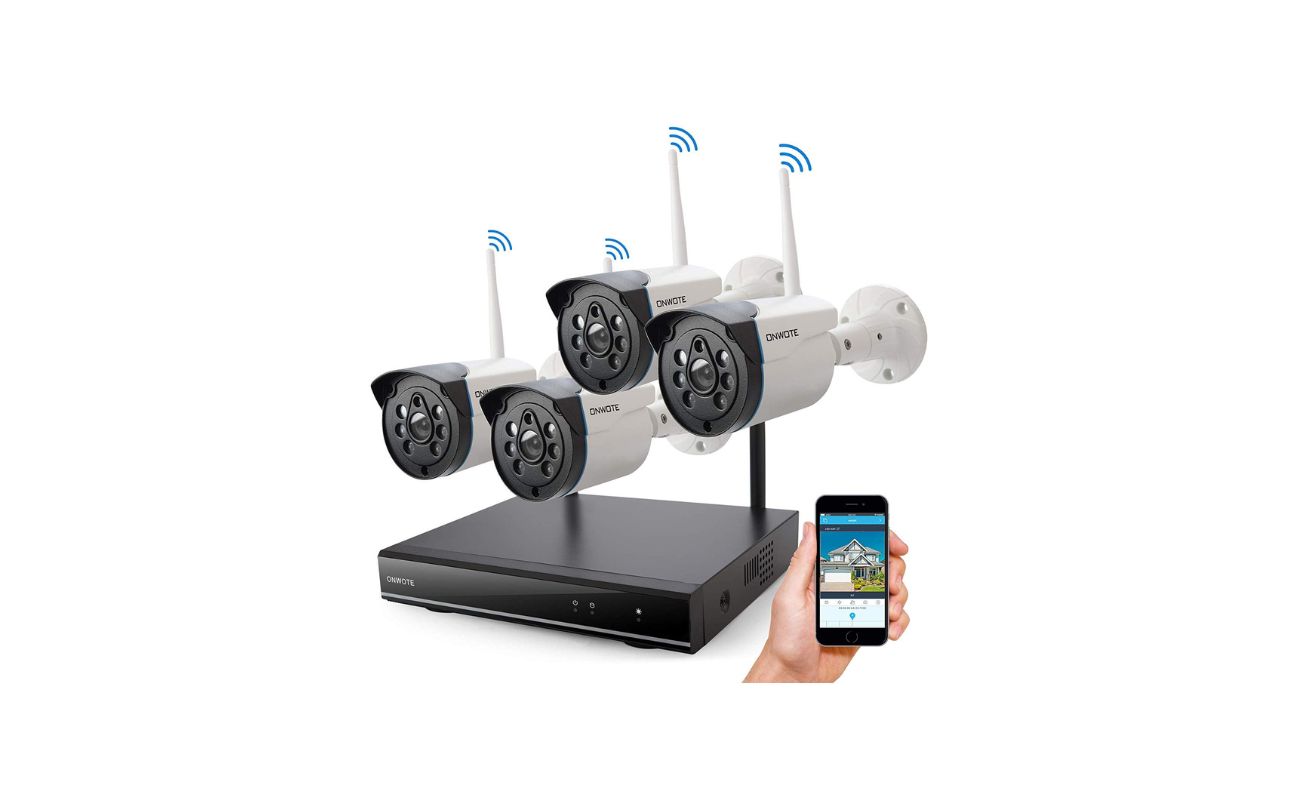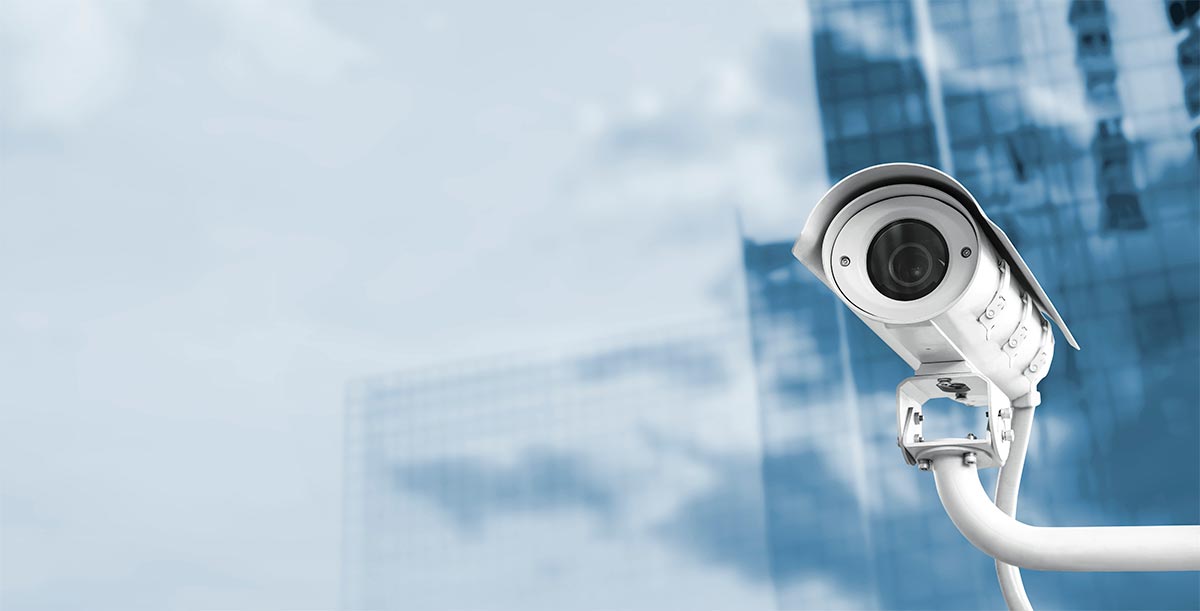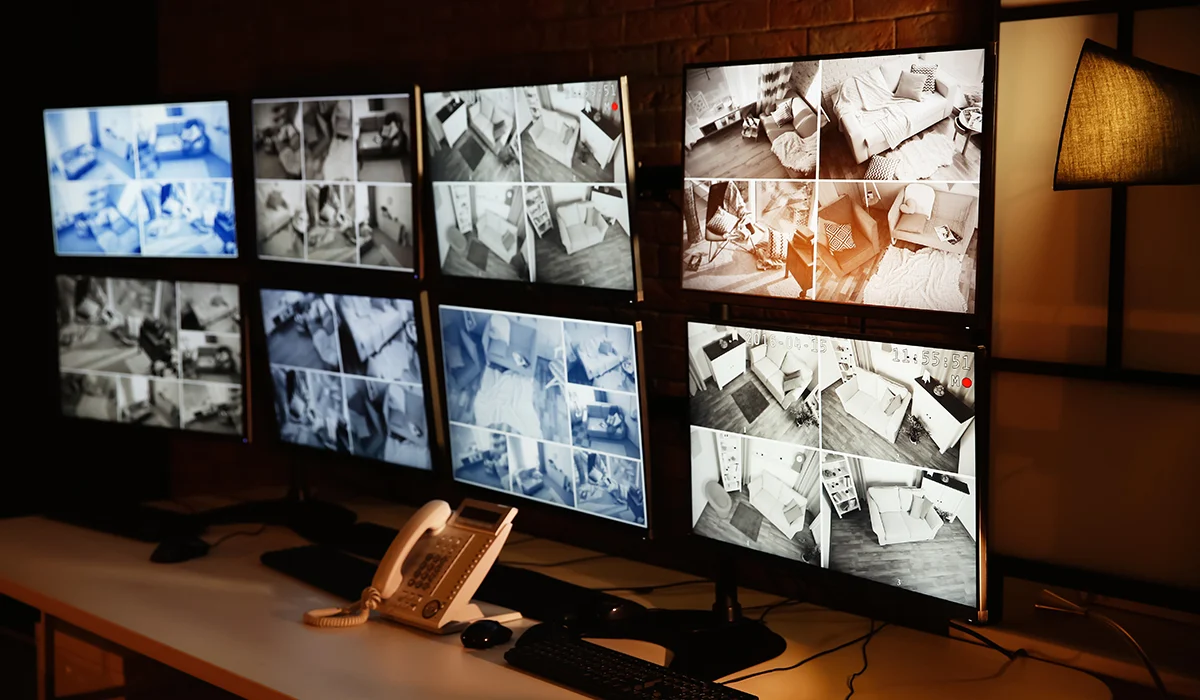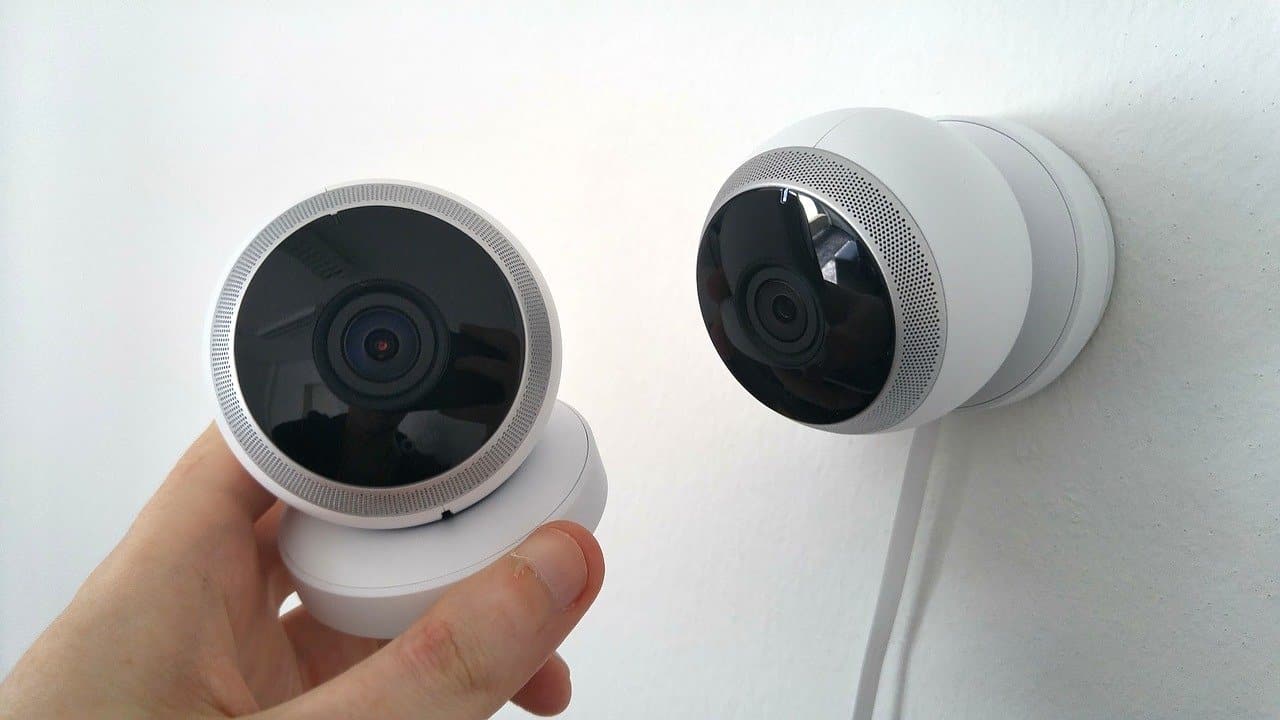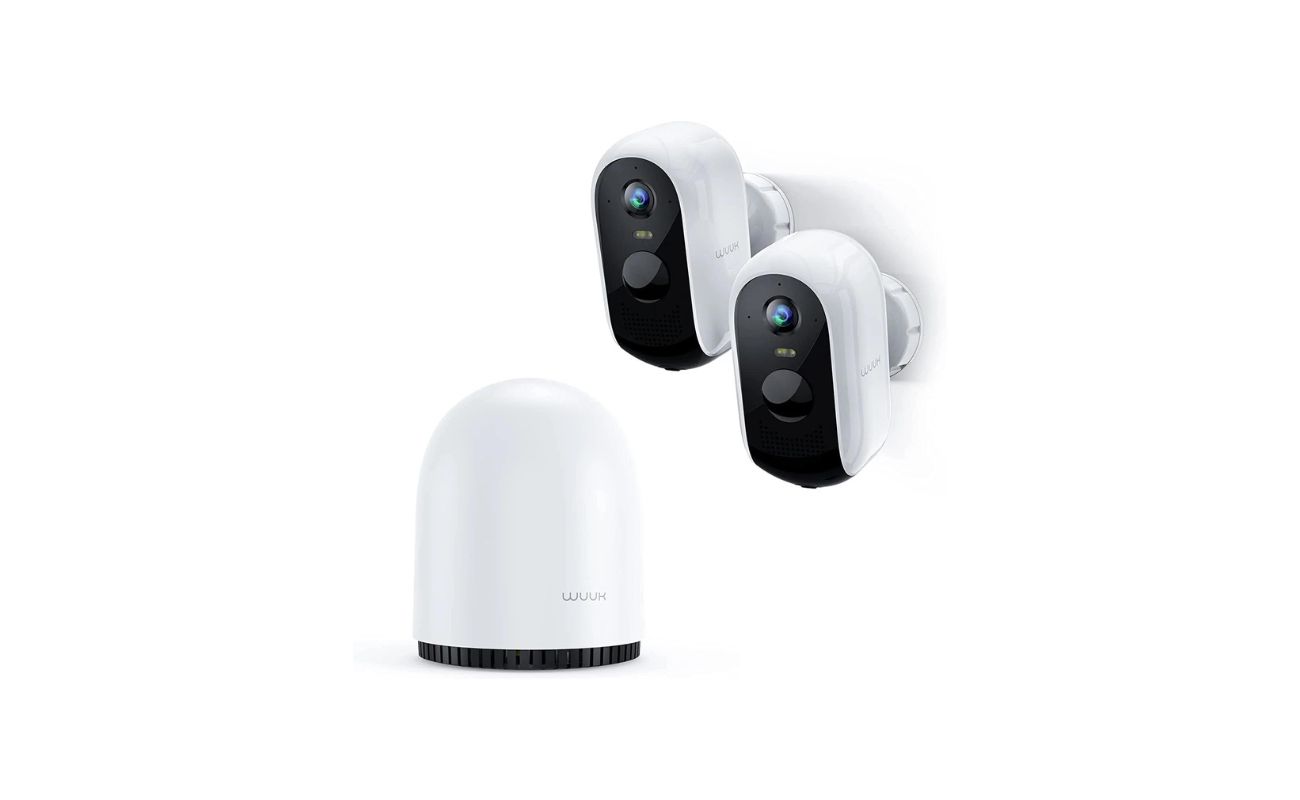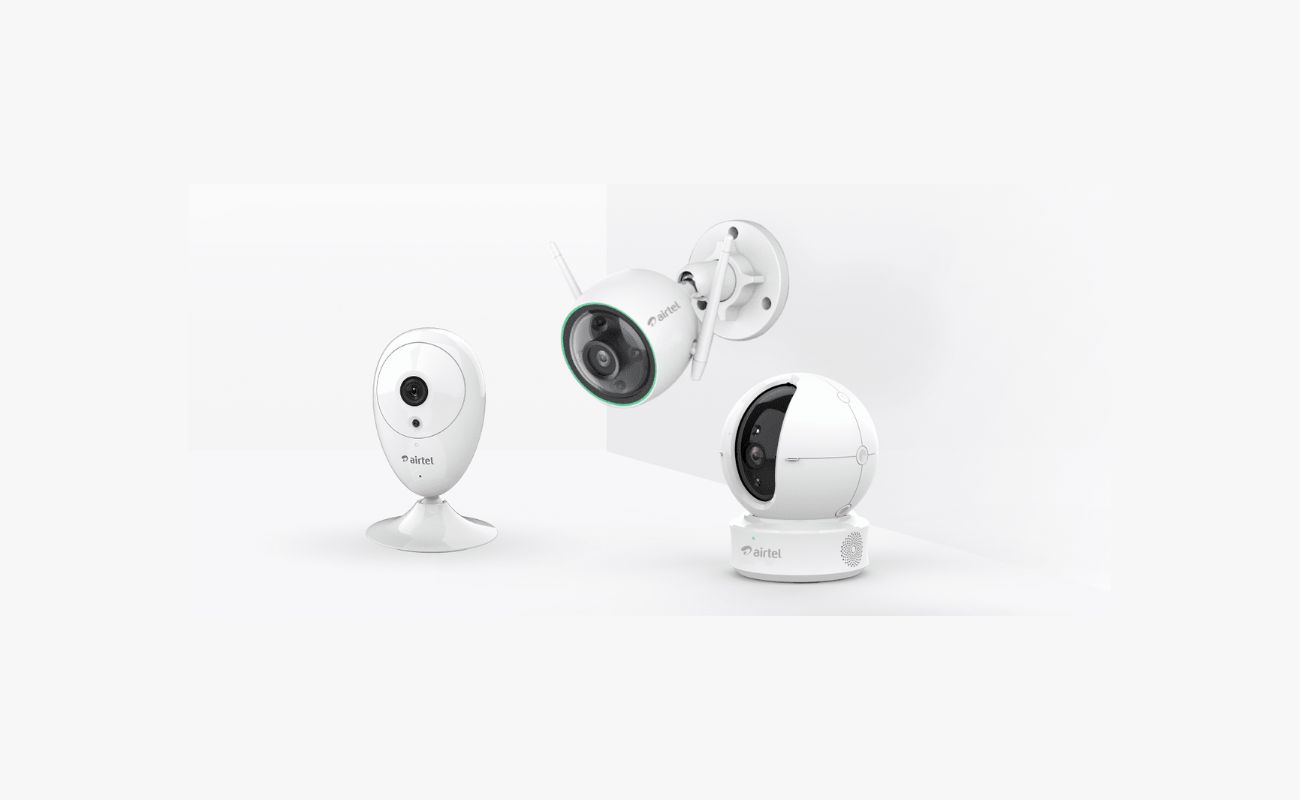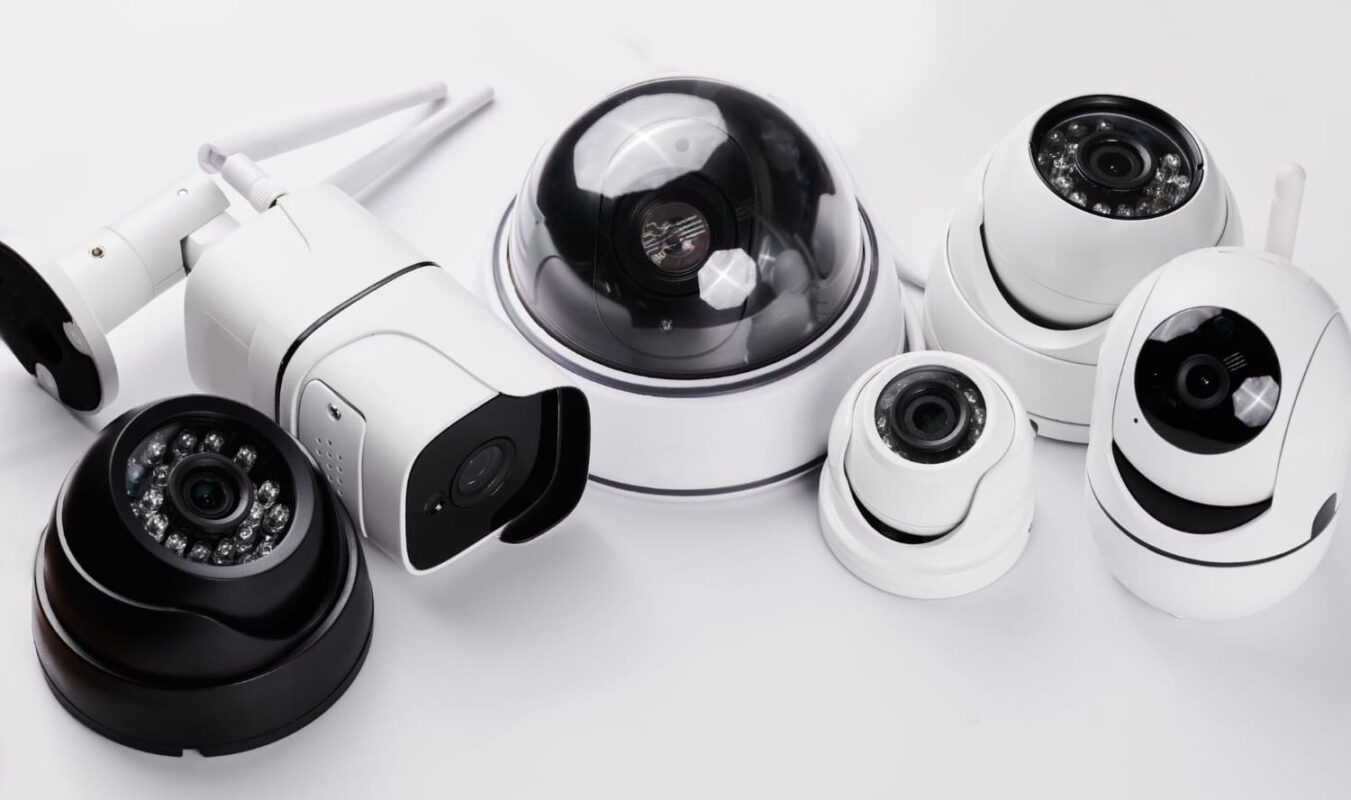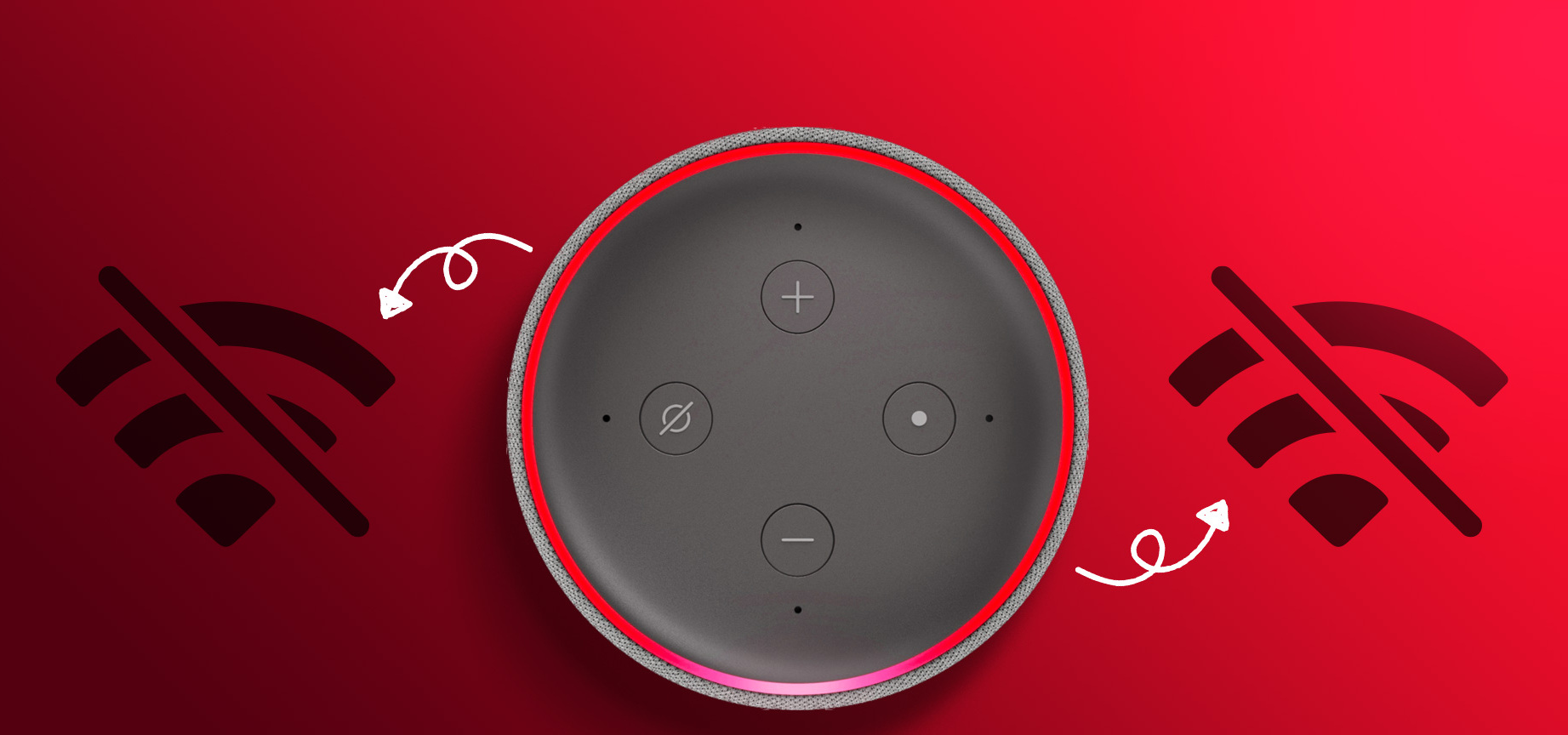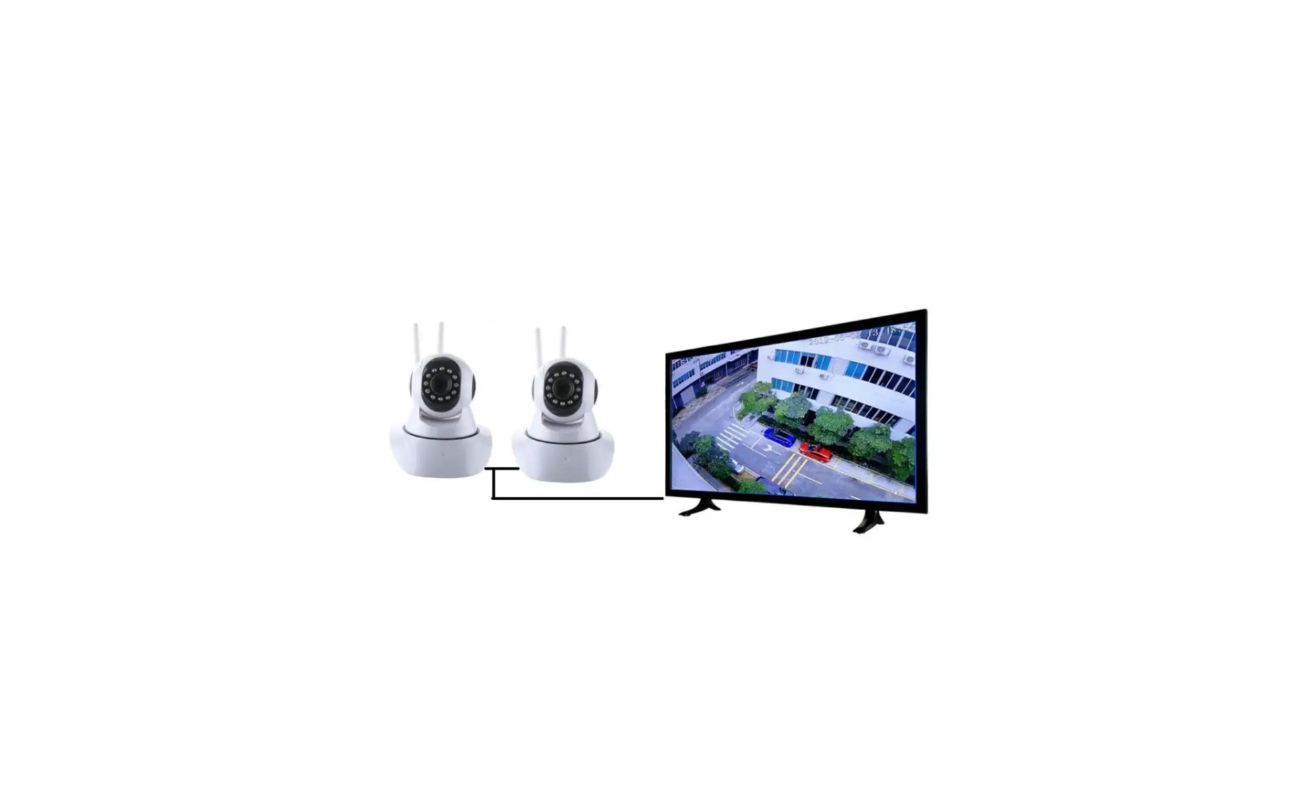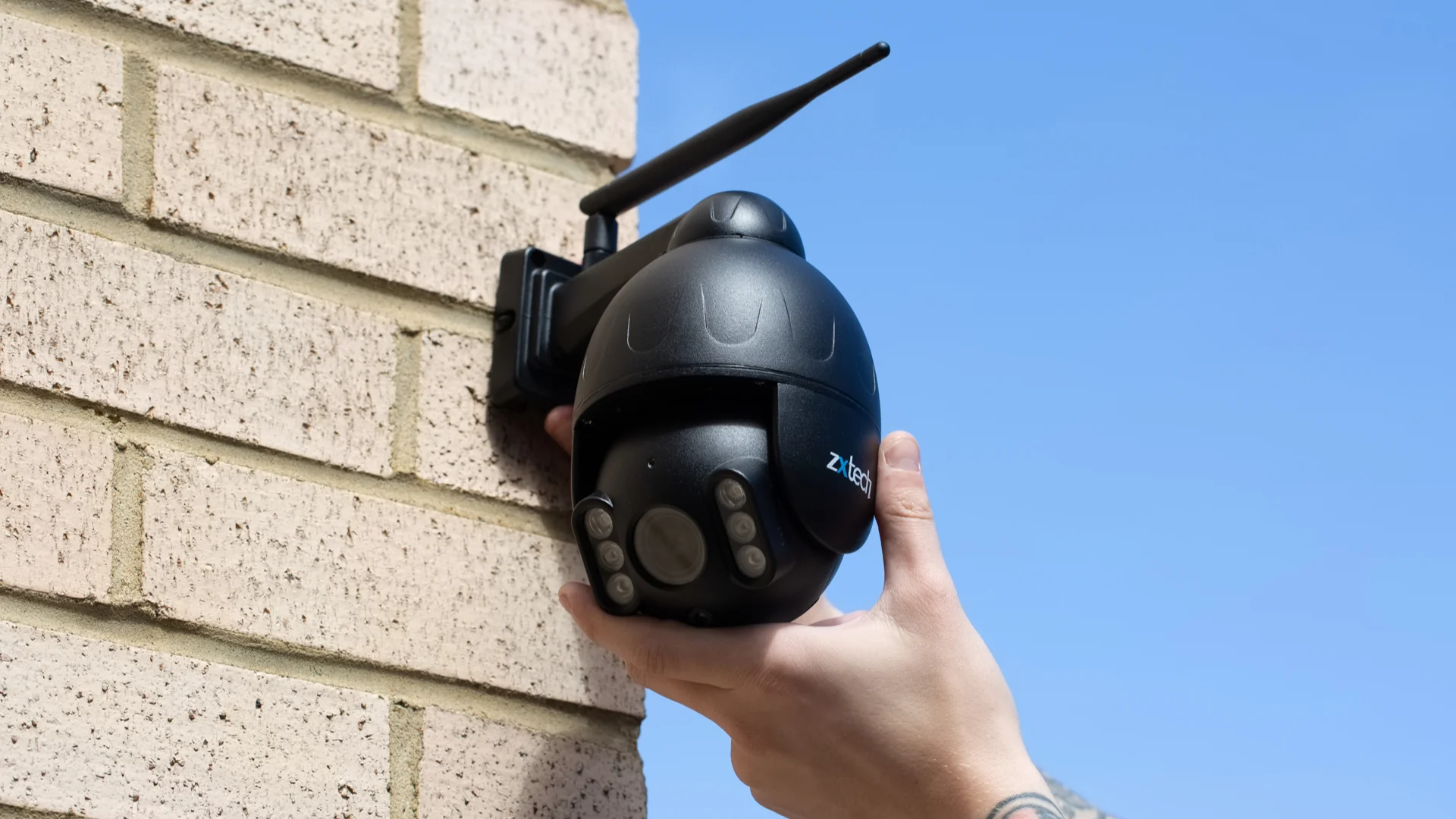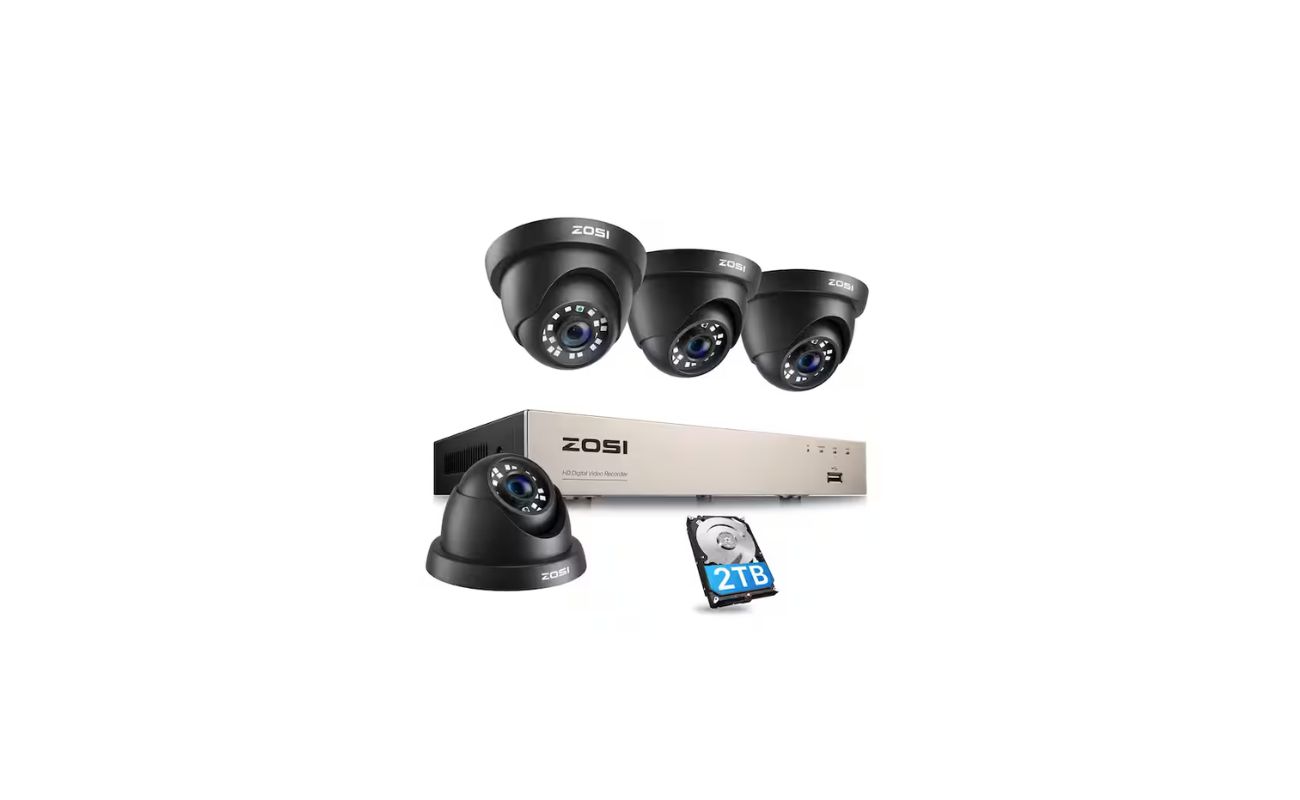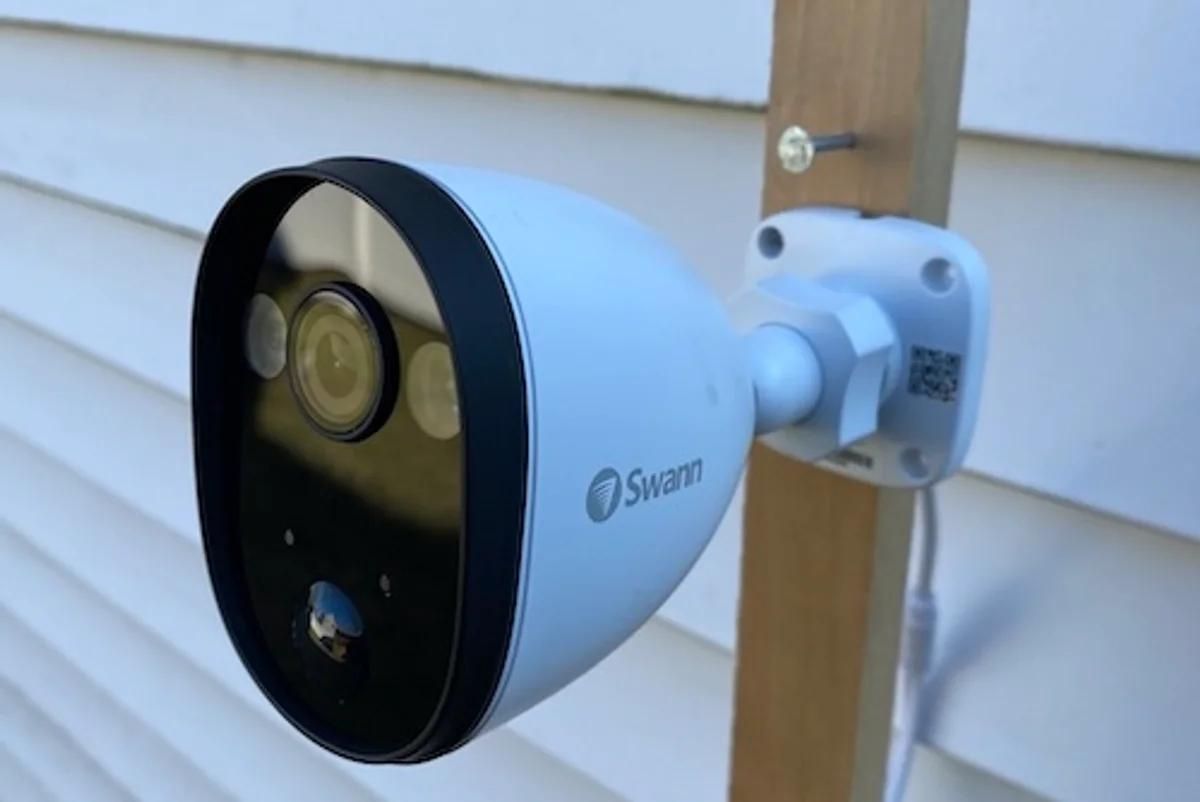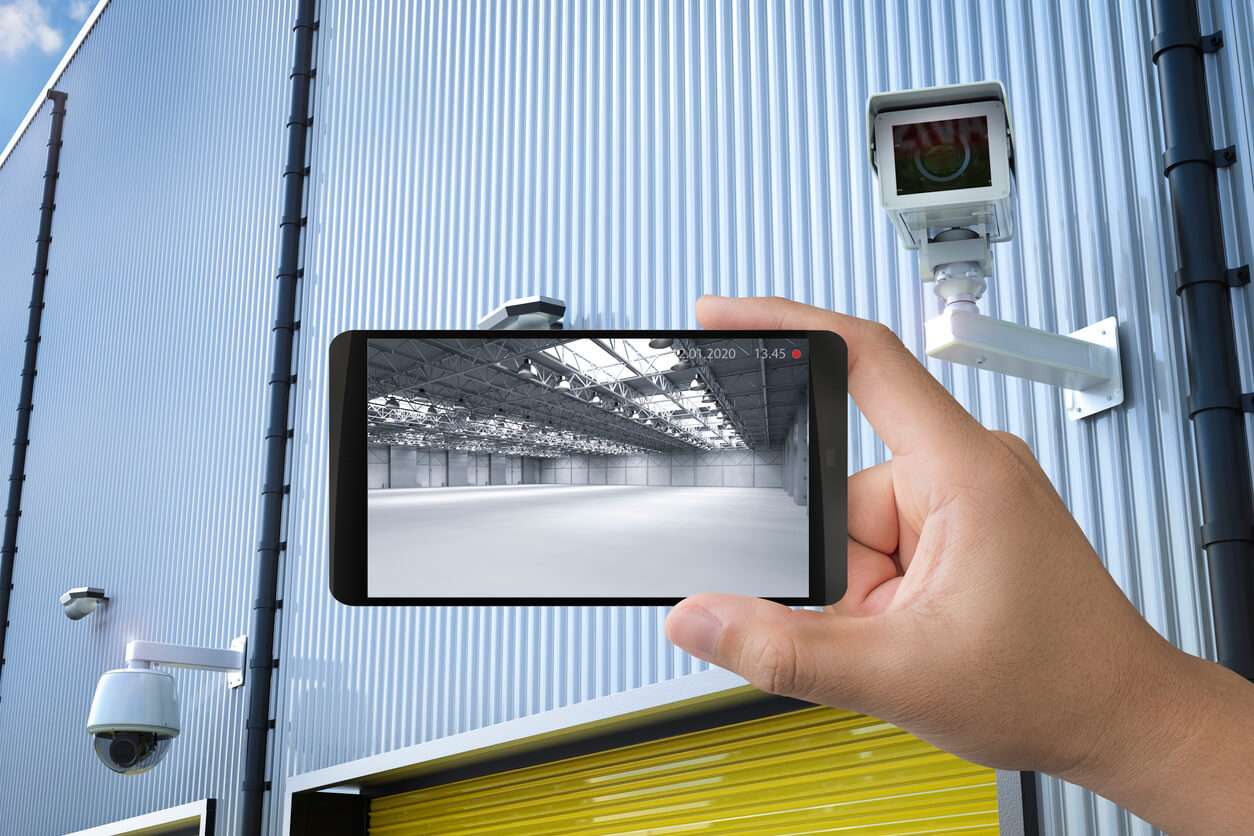Home>Home Security and Surveillance>How Infiltrated Internet-Connected Security Cameras Were Exposed
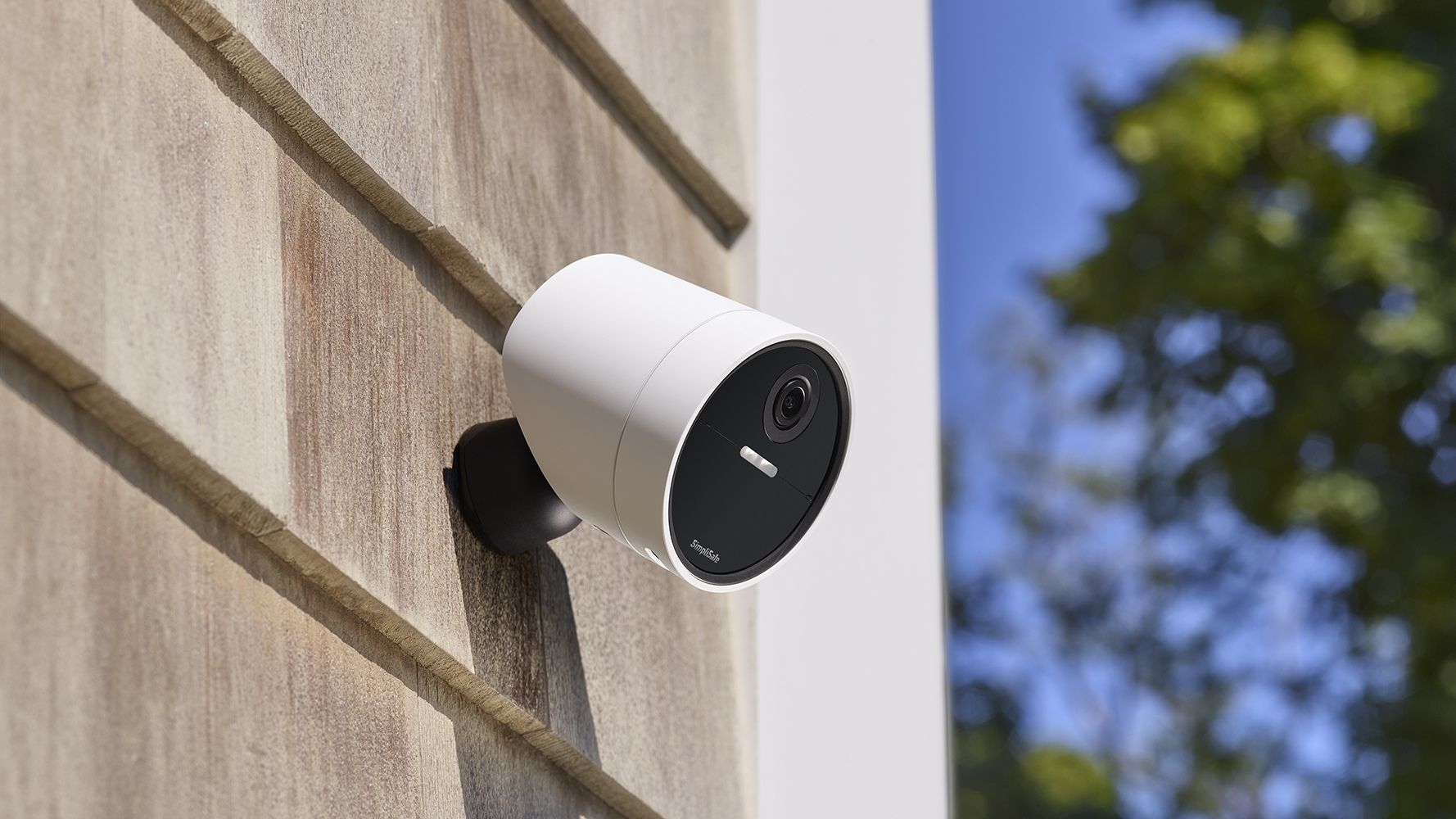

Home Security and Surveillance
How Infiltrated Internet-Connected Security Cameras Were Exposed
Modified: March 6, 2024
Discover how Internet-connected security cameras that were infiltrated were exposed and learn valuable insights about home security and surveillance.
(Many of the links in this article redirect to a specific reviewed product. Your purchase of these products through affiliate links helps to generate commission for Storables.com, at no extra cost. Learn more)
Introduction
In today’s digital age, home security and surveillance systems have become increasingly popular solutions for protecting our homes and loved ones. With the advancement of technology, internet-connected security cameras have emerged as a convenient and efficient way to monitor and safeguard our properties remotely. However, as with any internet-connected device, there is a potential for security breaches and vulnerabilities.
In this article, we will explore a case where internet-connected security cameras were infiltrated and exposed, highlighting the importance of proactively addressing security risks in home surveillance systems. We will delve into the methods used to uncover the compromised cameras, analyze the implications and risks involved, and discuss the steps taken to mitigate the breach.
It is crucial to understand that the purpose of this article is not to undermine the utility of internet-connected security cameras, but rather to emphasize the significance of implementing robust security measures to protect our privacy, prevent unauthorized access, and maintain the integrity of our surveillance systems.
So, join us on this journey as we unravel the story of infiltrated internet-connected security cameras and how they were exposed.
Key Takeaways:
- Internet-connected security cameras can be infiltrated by hackers, compromising privacy and security. It’s crucial to use strong passwords, update firmware, and collaborate with cybersecurity experts to protect against breaches.
- Discovering and mitigating security camera breaches requires proactive steps, such as disconnecting compromised cameras, changing passwords, and engaging with cybersecurity professionals. Continuous monitoring and user education are essential for maintaining security.
Read more: How Ukrainians Infiltrated Security Cameras
The Infiltration of Internet-Connected Security Cameras
Internet-connected security cameras have revolutionized the way we monitor our homes and properties. They offer the convenience of access from anywhere in the world, allowing homeowners to keep a watchful eye on their surroundings even when they’re not physically present. However, this convenience also comes with potential risks.
In recent years, there have been cases where hackers have managed to infiltrate internet-connected security cameras, gaining unauthorized access to live feeds and compromising the privacy and security of homeowners. These intrusions are often facilitated by weak security measures, such as default passwords or outdated firmware.
Once inside a camera system, hackers can not only view live footage but also manipulate the camera’s settings, potentially using it as a tool for surveillance or even launching further cyber-attacks. This infiltration poses a significant threat to both personal privacy and physical security.
The motives behind these intrusions can vary. In some instances, hackers may target specific individuals or properties for personal gain, attempting to gather sensitive information or planning physical break-ins based on the surveillance obtained. Other times, hackers may exploit these compromised cameras in larger-scale campaigns, creating networks of infected devices to carry out distributed denial-of-service (DDoS) attacks or gain unauthorized access to other systems.
The infiltration of internet-connected security cameras highlights the importance of implementing robust security measures. It is crucial to choose cameras from reputable manufacturers who prioritize security and regularly release firmware updates to address vulnerabilities. Additionally, strong and unique passwords should be used, and two-factor authentication should be enabled whenever possible to add an extra layer of protection.
By understanding the potential risks and taking proactive steps to secure our internet-connected security cameras, we can mitigate the chances of infiltration and ensure that our homes and properties remain safely monitored.
The Discovery of the Compromised Cameras
The discovery of compromised internet-connected security cameras often occurs through a combination of vigilant users and cybersecurity professionals who actively search for vulnerabilities in popular camera models.
In some cases, homeowners themselves may notice unusual activity or behavior from their cameras, such as cameras moving on their own or capturing footage that they don’t recognize. These suspicious activities can lead them to suspect that their cameras have been compromised. They may then seek assistance from technical experts or contact the camera manufacturer for guidance.
On the other hand, cybersecurity professionals continuously scan the internet for devices with security vulnerabilities, including internet-connected security cameras. By using specialized tools and techniques, they can identify cameras that are exposed to the internet without proper security configurations, such as default or weak passwords.
Once compromised cameras are discovered, researchers and experts investigate further to determine the extent of the breach. They analyze the attacker’s methods, trace their actions, and gather evidence to understand how the cameras were infiltrated and any potential data that may have been compromised.
Furthermore, cybersecurity firms and government agencies often collaborate to share information and coordinate efforts to uncover larger networks of compromised cameras. By pooling resources and expertise, these collaborations can help identify patterns, track down the attackers, and ultimately mitigate the impact of the breach.
The discovery of compromised cameras serves as a wake-up call to both homeowners and camera manufacturers. It highlights the vulnerabilities that exist within internet-connected devices and underscores the need for proactive measures to secure these devices from potential cyber threats.
Through the discovery of compromised cameras, we gain valuable insights into the evolving tactics of hackers and the importance of staying vigilant. By actively monitoring our devices, implementing strong security measures, and collaborating with cybersecurity experts, we can protect ourselves against potential breaches and safeguard our privacy and security.
Methods Used to Expose the Security Camera Vulnerability
Exposing the vulnerability of internet-connected security cameras requires a combination of technical expertise and ingenuity. Researchers and cybersecurity professionals employ various methods to identify security weaknesses in these devices, ultimately shedding light on potential risks.
One common approach is conducting penetration testing or ethical hacking. This involves intentionally attempting to exploit the security vulnerabilities of a camera system to determine its level of resilience against attacks. By simulating real-world hacking scenarios, researchers can assess the camera’s defenses and identify areas where improvements are needed.
Another method utilized is reverse engineering. This involves disassembling the camera’s firmware or software to analyze its underlying code and uncover any flaws or vulnerabilities. By understanding how the camera’s software operates, researchers can identify weaknesses that can be exploited by hackers.
In addition, cybersecurity professionals actively monitor underground forums and hacker communities where individuals discuss and share information about security vulnerabilities in various devices, including internet-connected security cameras. By staying ahead of emerging threats, these professionals can proactively address potential weaknesses and inform camera manufacturers of any vulnerabilities that need to be patched.
Data analysis is also a crucial method used to expose security camera vulnerability. By analyzing network traffic and metadata associated with camera systems, researchers can detect suspicious patterns and behaviors that may indicate unauthorized access or surveillance. This analysis can provide insights into the methods used by attackers and help identify compromised devices.
Furthermore, collaboration between researchers, manufacturers, and government agencies plays a vital role in exposing security camera vulnerability. By sharing information about identified vulnerabilities and working together to develop solutions, these entities can collectively address the security gaps and protect users from potential breaches.
It is important to note that methods used to expose security camera vulnerabilities must adhere to ethical standards. The aim is not to exploit or compromise the privacy and security of individuals but rather to uncover weaknesses that pose a threat to users’ safety and privacy.
Through a combination of penetration testing, reverse engineering, monitoring forums, data analysis, and collaboration, the methods used to expose security camera vulnerabilities contribute to creating safer and more secure devices for users.
Always change the default password on your internet-connected security cameras to a strong, unique password to prevent unauthorized access.
Analysis of the Exposed Cameras
Once security cameras are exposed and compromised, a thorough analysis is conducted to assess the extent of the breach, understand the impact on privacy and security, and identify potential vulnerabilities that led to the infiltration.
The analysis begins by examining the compromised cameras’ configurations, including firmware versions, network settings, and authentication mechanisms. This information helps researchers determine whether the breach was a result of outdated software, weak passwords, or other security oversights.
Next, experts delve into the camera’s logs and captured network traffic to identify any suspicious activities or signs of unauthorized access. By tracing the attacker’s actions and understanding their methods, researchers can gain insights into the motives behind the breach and assess the risks posed to the camera owners.
Additionally, the analysis often involves assessing the potential data that may have been accessed or stolen. This includes reviewing recorded footage, images, or audio captured by the compromised cameras. Determining whether personally identifiable information or sensitive data was compromised is crucial in understanding the full impact of the breach.
Furthermore, researchers examine the impact of the exposed cameras not only on the individuals who own the devices but also on larger networks and systems. Compromised cameras can be used as entry points to gain unauthorized access to other devices or even launch larger-scale cyber-attacks. Analyzing these potential risks helps develop strategies to prevent future breaches and protect against widespread threats.
The analysis also includes an evaluation of the camera manufacturer’s response to the breach. This includes assessing the timeliness of security patches or firmware updates released to address the vulnerabilities, as well as the communication and support provided to affected camera owners. Understanding the manufacturer’s response is crucial in determining their commitment to improving security and protecting their customers.
By conducting a comprehensive analysis of exposed cameras, cybersecurity professionals can provide valuable insights into the vulnerabilities, risks, and potential consequences of camera breaches. This analysis allows for better understanding of the need for robust security measures, proactive software updates, and user education to prevent future compromises and protect the privacy and security of camera owners.
Read more: How To Connect A Security Camera
Implications and Risk Assessment
The infiltration and exposure of internet-connected security cameras have significant implications and pose various risks to both individuals and organizations. Understanding and assessing these implications is essential for effectively mitigating the potential harm caused by such breaches.
One of the primary implications is the violation of personal privacy. Compromised cameras provide unauthorized individuals with access to live feeds and recorded footage, allowing them to intrude upon the private lives of camera owners. This invasion of privacy can have severe emotional and psychological impacts on individuals and families, eroding their sense of security and causing significant distress.
Furthermore, the utilization of compromised cameras as tools for surveillance or reconnaissance poses a risk to physical security. Attackers may gather information from the footage obtained, such as daily routines, security measures, or vulnerable entry points, to plan physical break-ins or other malicious activities. This can leave homeowners and their properties exposed to potential threats.
In addition to personal risks, compromised cameras also contribute to larger-scale cybersecurity concerns. Hackers can exploit these devices to create botnets, which are networks of infected devices used to carry out distributed denial-of-service (DDoS) attacks. These attacks can overwhelm websites or online services, rendering them inaccessible and creating disruptions on a massive scale.
Risk assessment is crucial in understanding the potential impact and severity of these implications. It involves evaluating the likelihood of a breach occurring, the potential harm it can cause, and the effectiveness of existing security measures in mitigating those risks.
In assessing the risks, factors such as the sensitivity of the captured data, the significance of the monitored premises, and the capabilities and motivations of potential attackers are considered. Additionally, the vulnerabilities discovered through the exposure of cameras play a vital role in identifying areas that require immediate attention and enhancement.
It is important for both camera owners and manufacturers to conduct comprehensive risk assessments to identify and address potential vulnerabilities. This includes implementing strong access controls, regularly updating firmware, and providing clear instructions to users on how to secure their cameras. Additionally, user education and awareness regarding best practices for securing devices can significantly reduce the risk of exposure.
By understanding the implications and conducting a thorough risk assessment, individuals and organizations can take proactive steps to mitigate risks, enhance their security practices, and protect their privacy and physical security.
Steps Taken to Mitigate the Security Camera Breach
Addressing and mitigating security camera breaches requires a coordinated effort between camera owners, manufacturers, and cybersecurity professionals. By taking swift and decisive action, the impact of the breach can be minimized, and measures can be put in place to prevent future compromises. Here are some steps typically taken to mitigate security camera breaches:
- Disconnect and isolate the compromised cameras: As soon as a breach is detected, camera owners should disconnect the affected cameras from the network to prevent further unauthorized access. Isolating these cameras ensures that they cannot be used as entry points for other malicious activities.
- Change all passwords: Camera owners should immediately change all passwords associated with the compromised cameras. It is essential to use strong, unique passwords that are not easily guessable. Implementing two-factor authentication adds an extra layer of security.
- Patch and update: Camera manufacturers should release security patches or firmware updates to address the vulnerabilities that led to the breach. Camera owners should promptly apply these updates to ensure their devices are protected against future attacks.
- Enhance security measures: Camera owners should review and strengthen their security practices. This includes regularly updating firmware, enabling encryption, implementing firewalls, and using intrusion detection systems. Ensuring that cameras are not exposed to the internet without proper security configurations is also crucial.
- Engage with cybersecurity professionals: Experts in cybersecurity can provide guidance and assistance in securing compromised camera systems. These professionals can analyze the breach, identify any residual risks, and recommend specific measures to enhance the security of the camera network.
- Improve user awareness and education: Camera owners should educate themselves and their fellow users about best practices for secure camera usage. This includes raising awareness about the risks of default passwords, providing guidance on password management, and promoting the importance of regular updates and security protocols.
- Reporting the breach: Camera owners should report the breach to relevant authorities, such as local law enforcement or cybercrime units. Such reporting helps create awareness of the breach and may aid in investigations and tracking down the perpetrators.
- Continual monitoring and assessment: After mitigating the breach, camera owners should implement continuous monitoring and assessment of their camera systems. Regular reviews of logs, network traffic, and security configurations can help identify and address any potential vulnerabilities.
By taking proactive steps to mitigate security camera breaches, camera owners and manufacturers can strengthen the security of their devices and significantly reduce the risk of future compromises. Collaboration between stakeholders, combined with ongoing vigilance and improvement of security practices, is key to protecting privacy and ensuring the integrity of internet-connected security cameras.
Conclusion
The infiltration and exposure of internet-connected security cameras serve as a stark reminder of the importance of robust security measures in today’s digital world. While these cameras offer convenience and improved monitoring capabilities, they also present vulnerabilities that can be exploited by hackers with malicious intent.
In this article, we explored the discovery, methods used to expose vulnerabilities, analysis of the exposed cameras, implications, and the steps taken to mitigate security camera breaches. It has become evident that owning an internet-connected security camera comes with a responsibility to prioritize security for the sake of privacy and physical security.
To protect against breaches, camera owners should adopt best practices such as changing default passwords, enabling two-factor authentication, and keeping firmware up to date. Camera manufacturers also play a vital role in developing secure devices and releasing timely updates to address vulnerabilities.
Through close collaboration between stakeholders, including camera owners, manufacturers, and cybersecurity professionals, we can create a safer environment for internet-connected security cameras. Ongoing monitoring, assessment, and education are crucial to staying ahead of emerging threats and minimizing risks.
As technology continues to advance, it is imperative that we remain vigilant and proactive in securing these devices. By doing so, we can fully enjoy the benefits of internet-connected security cameras while ensuring the privacy, security, and peace of mind of ourselves and our loved ones.
In conclusion, the infiltrated internet-connected security cameras serve as a call to action for all stakeholders involved. By taking the necessary steps to enhance security and staying informed about potential vulnerabilities, we can create a safer and more secure environment for home surveillance systems.
Frequently Asked Questions about How Infiltrated Internet-Connected Security Cameras Were Exposed
Was this page helpful?
At Storables.com, we guarantee accurate and reliable information. Our content, validated by Expert Board Contributors, is crafted following stringent Editorial Policies. We're committed to providing you with well-researched, expert-backed insights for all your informational needs.
